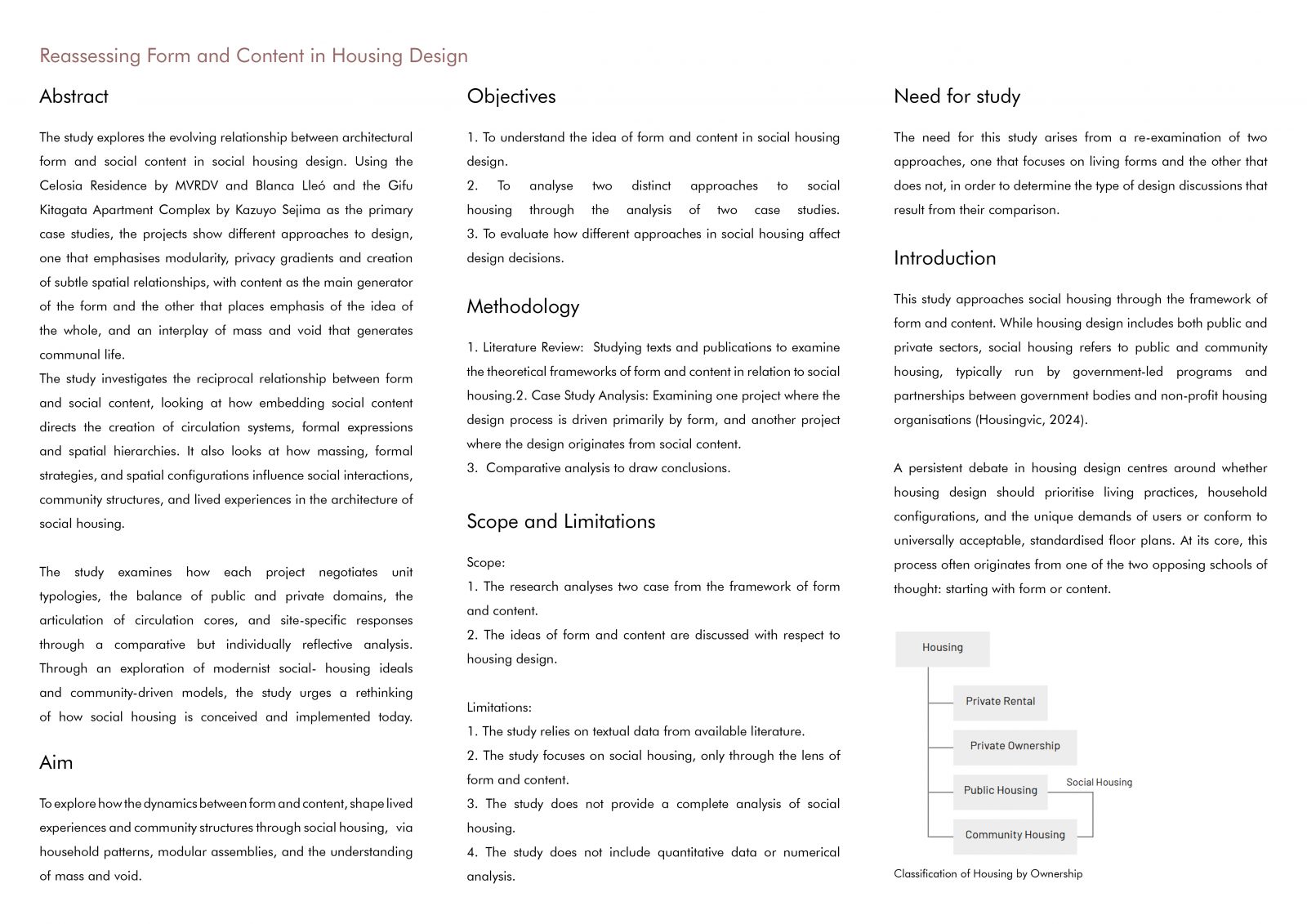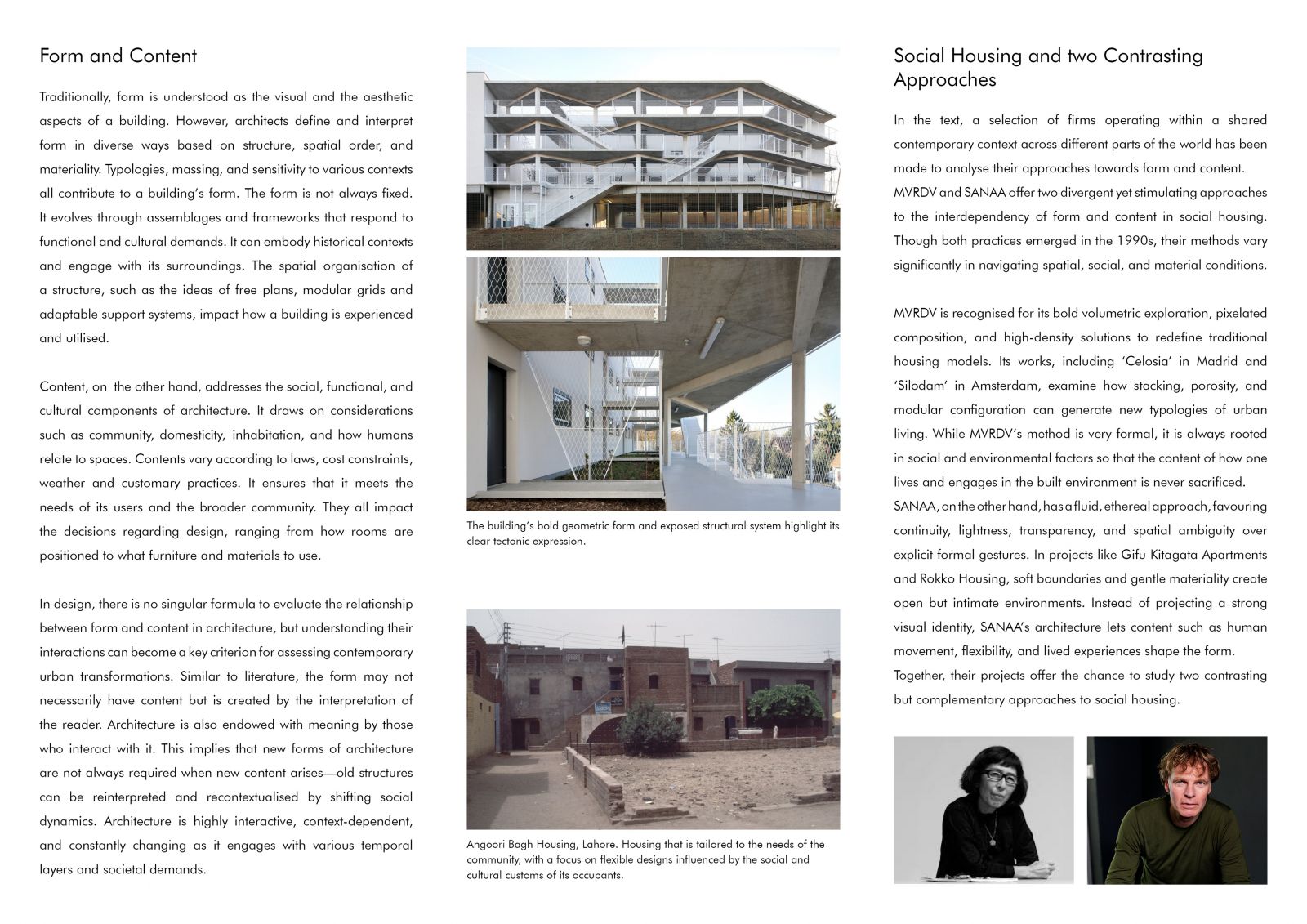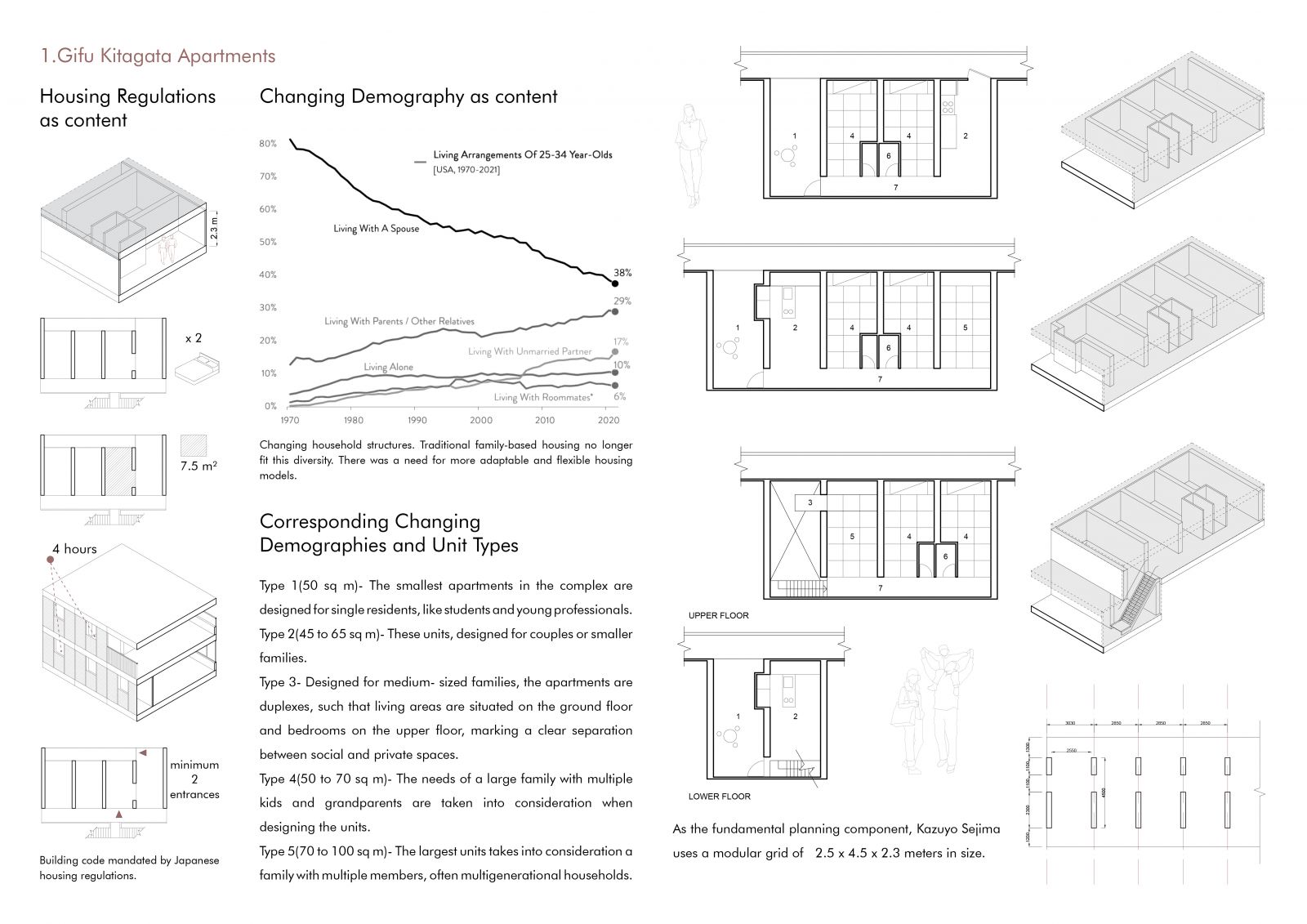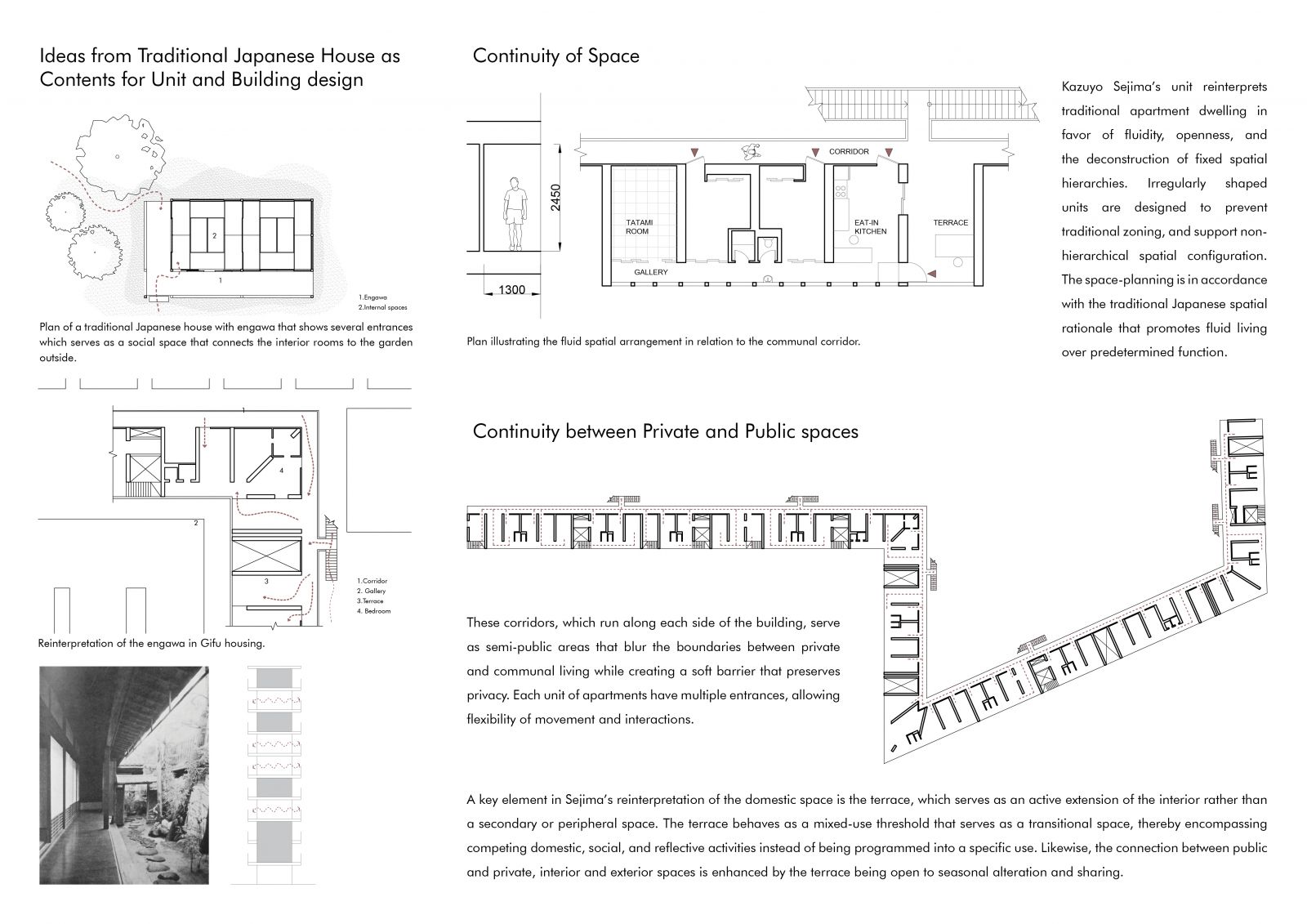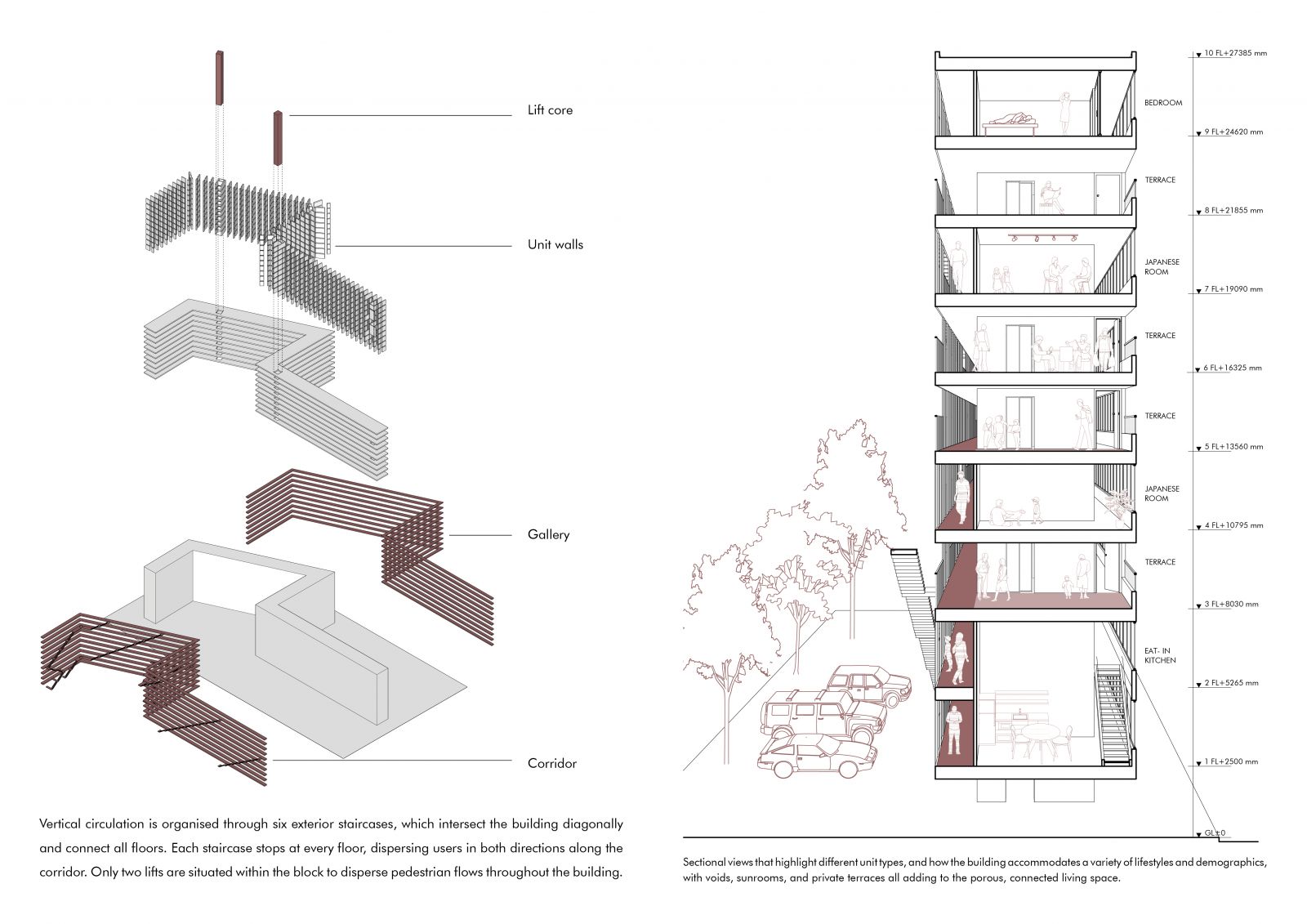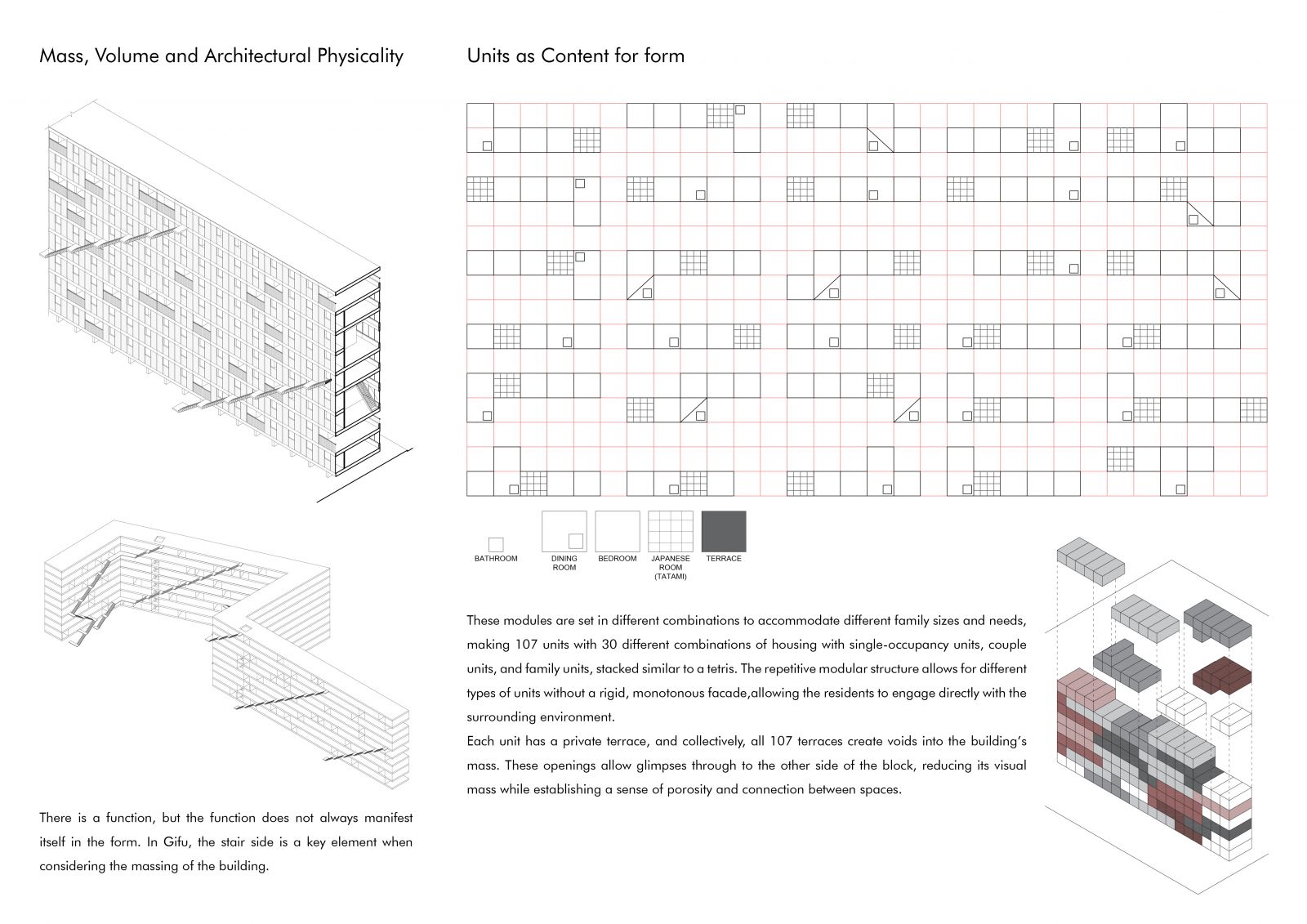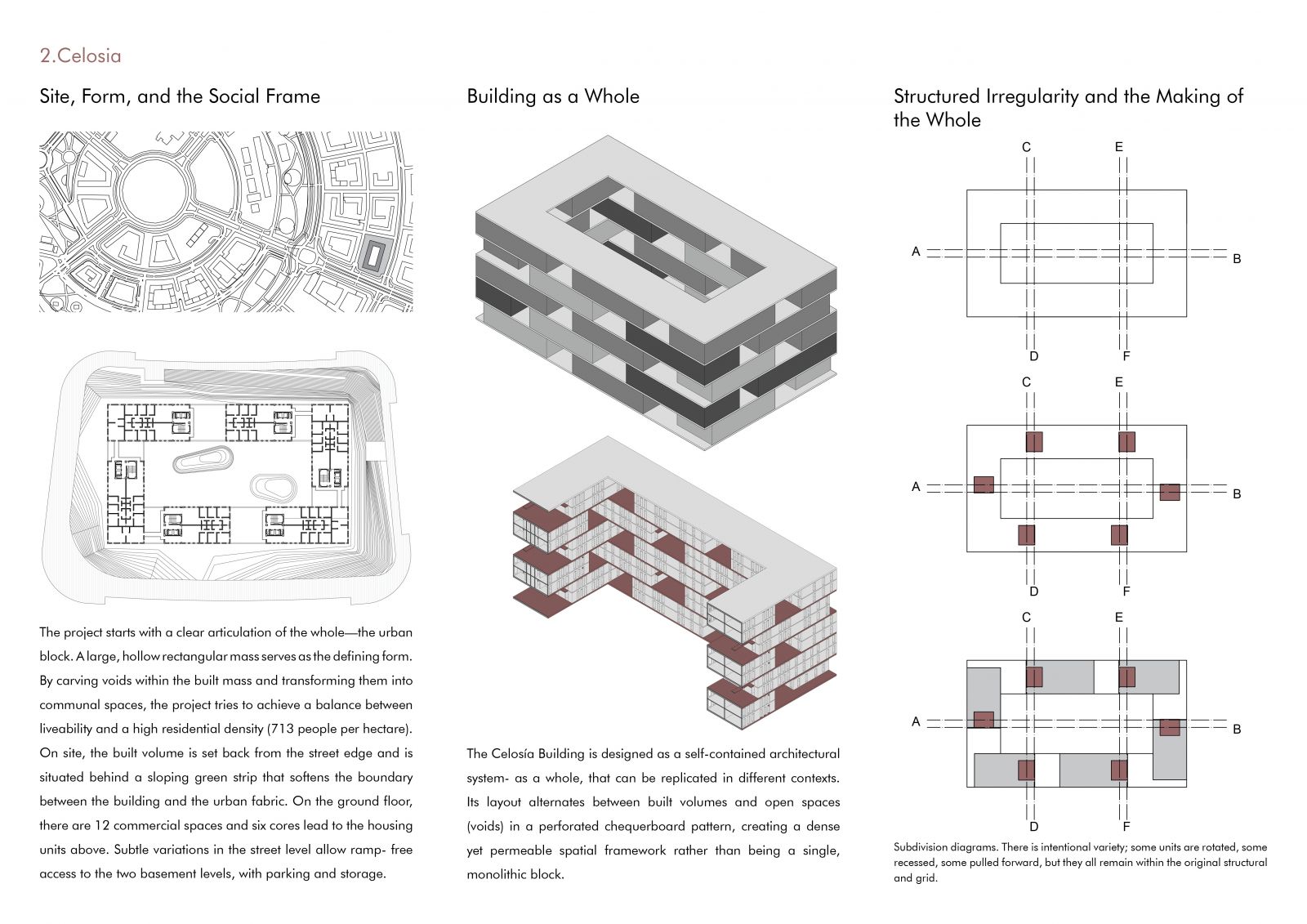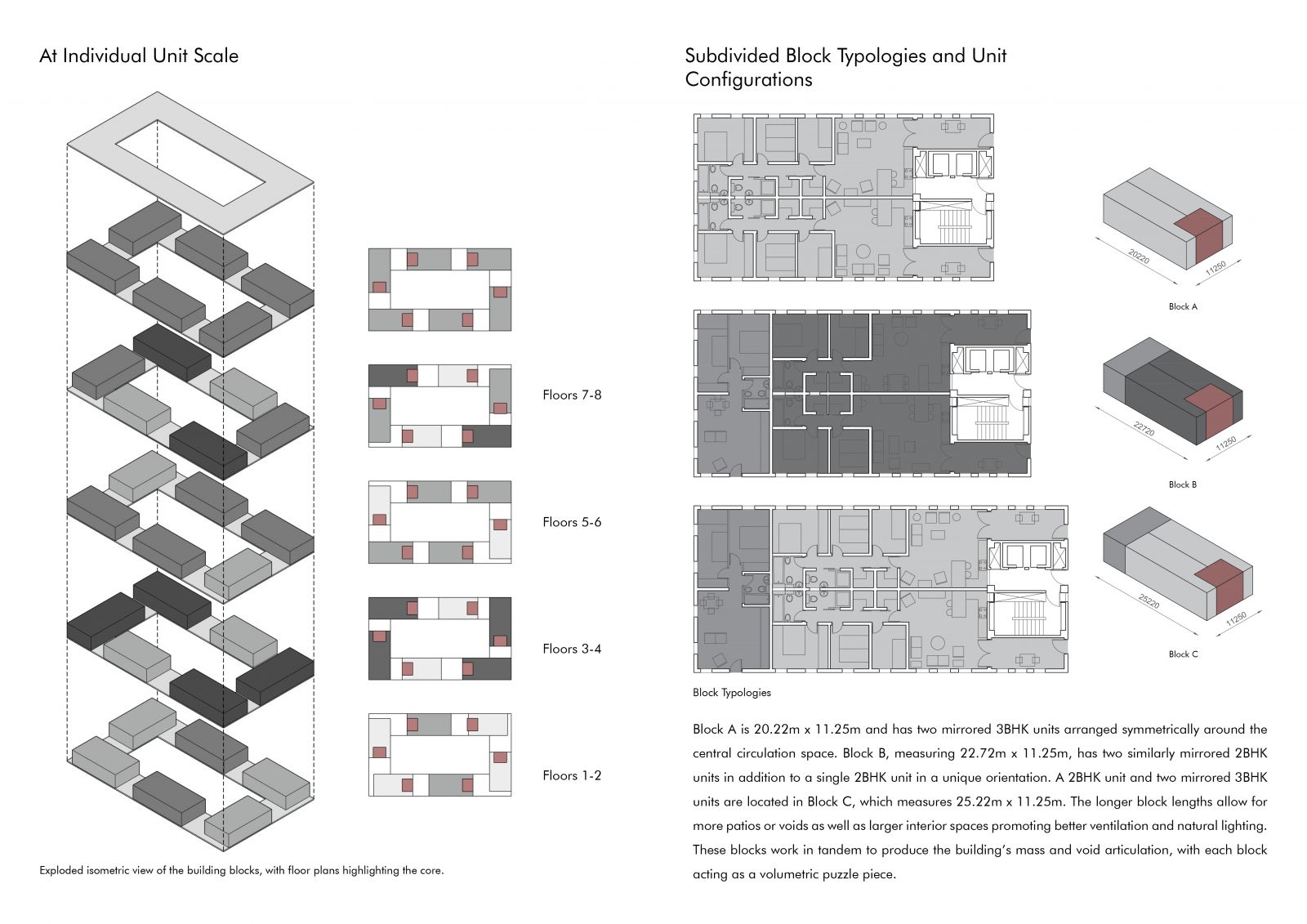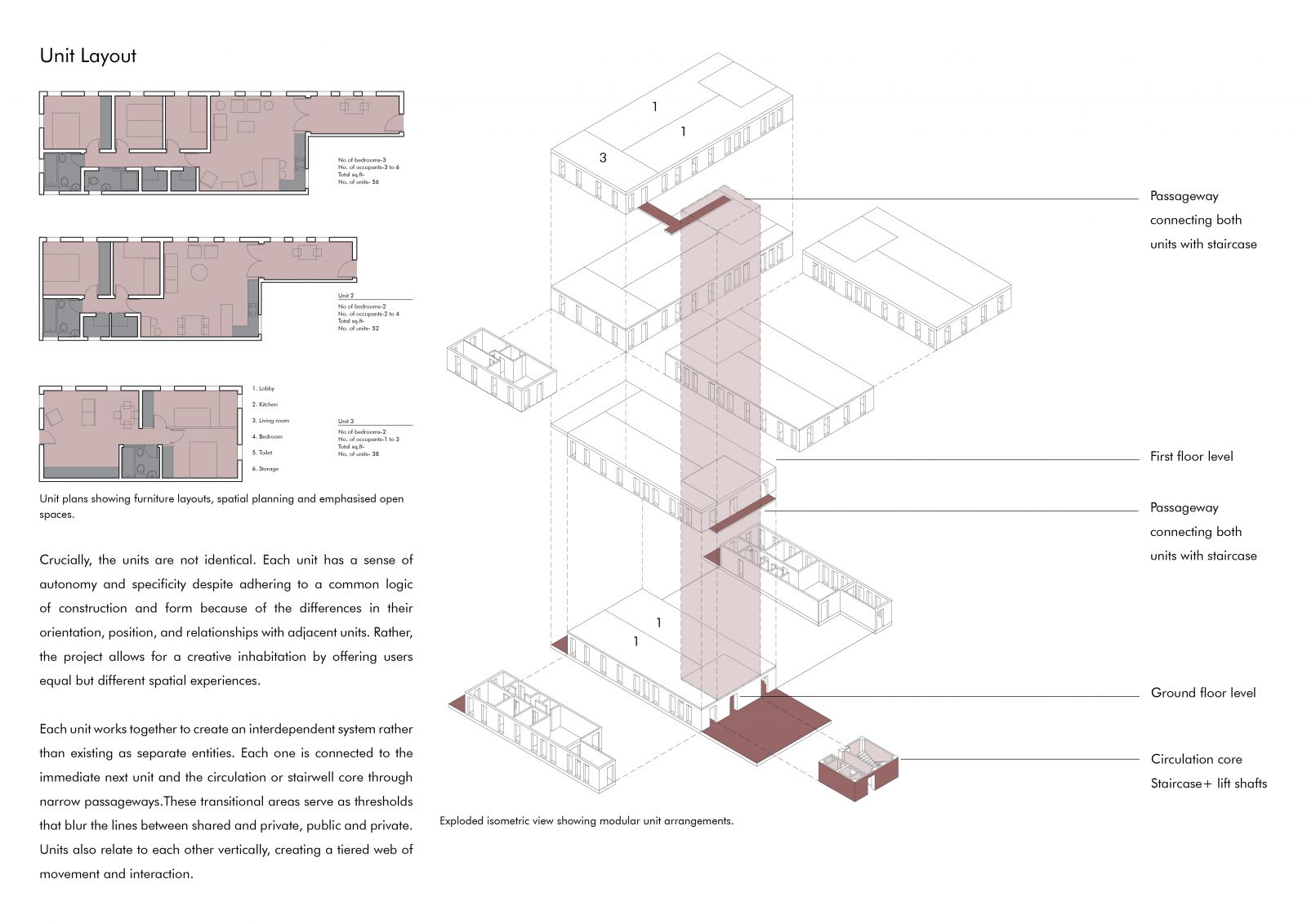Your browser is out-of-date!
For a richer surfing experience on our website, please update your browser. Update my browser now!
For a richer surfing experience on our website, please update your browser. Update my browser now!
This research investigates the potential of social housing typologies to respond to the shifting demands of contemporary living. As demographic patterns continue to evolve, conventional standardised housing models are increasingly inadequate. The rigid functional zoning and fixed spatial hierarchies seen in public housing typologies no longer align with the fluid lifestyles, economic uncertainties, and cultural transformations in the lives of people. At the core of this enquiry is the notion of form and content functioning as one compelling lens through which to reexamine social housing paradigms. The research explores how the inseparable interaction of spatial form and content can result in housing that is both socially responsive and architecturally robust, rather than treating them as distinct entities. Two case studies, Gifu Kitagata Housing and the Celosia housing, serve as examples through which these ideas are unpacked. Together, these cases reveal that the future of household patterns and demographics remains uncertain.
View Additional Work